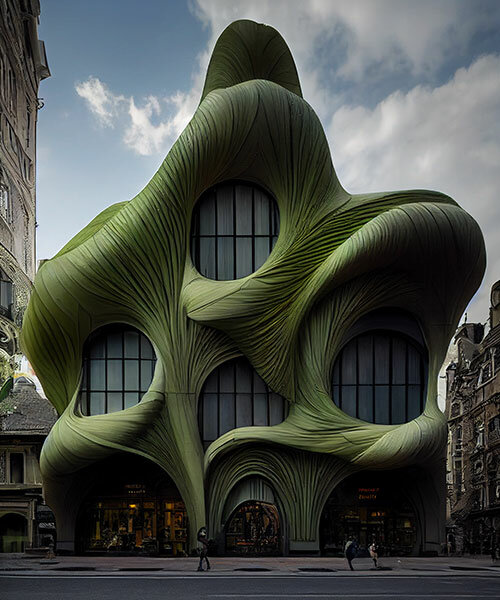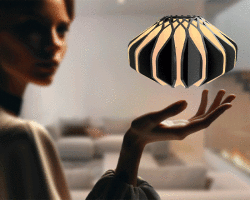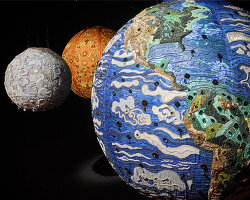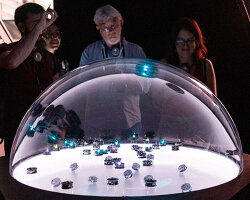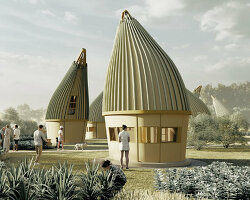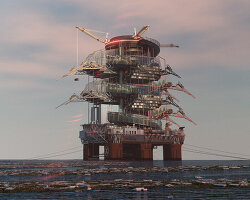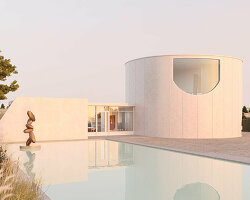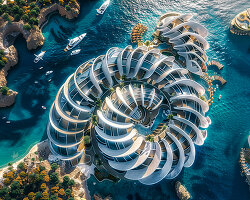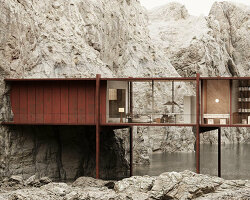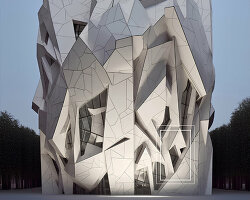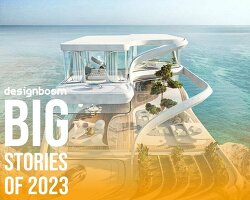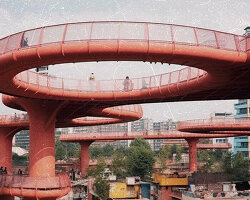Hassan Ragab’s AI-generated explorations in architecture
Computational designer and digital artist Hassan Ragab explores non-modular architecture utilizing the text-to-image artificial intelligence tool Midjourney. The riveting structures reveal colossal facades carved with intricate patterns and sweeping openings. For this series, the buildings are clad with organic forms that resemble lush vegetation as a means of a new form of ornamentation. The result sees the conjunction of built solutions and surrealism, expanding the limitations of physical and architectural imaginations.
According to the Egyptian artist, the future of architecture is questioned in the hands of AI tools, which through the passing of the years, they become all more powerful. ‘These tools are still in their infancy, but they develop at a much faster pace than we can fathom. We are already witnessing some of these tools being incorporated into adobe products, others extending to video making, and a few research papers paving the way for text to 3D models. There is also news about AI clouds automating electrical models in BIM (Building Information Modeling). I believe that in the upcoming few years, these tools will slowly take bigger parts in the architectural process, extending to assess viable buildable options and find optimum structural solutions, project management techniques, and suitable construction methods. By then, it will be very hard to predict what it means to be an architect. For now, I am hopeful that technology will allow humanity to come up with novel, better, and more sensible ideas of where and how we live, yet I might be wrong,’ Ragab shares with designboom.
all images by Hassan Ragab
a perfect example of parametric architecture
The Egyptian interdisciplinary designer and artist generates digital art, utilizing Midjourney as the primary design tool for his fictional architectural series. Hassan Ragab reconstructs virtual modules of primitive architecture into dynamic and abstract arrangements. The result is an excellent example of parametric architecture, which expands our imagination and challenges physical constraints. The images depict imposing volumes engraved intricately with ‘vegetation’ and glazing, linking monumental scale with artistic expressionism. According to Ragab, the AI program is an intriguing tool of exploration, which requires detailed inputs to result in creative outputs. Although it seems to involve less creativity, in fact, it forces the human brain to be more imaginative with using prompts.
‘Only very few architects are able to manifest their own visions in real life. This is mainly due to its high cost and complexity, leading many architects to be involved in many different aspects of the discipline away from the design. In modern times and despite what we see around us of some fascinating works of engineering, dealing with architecture as a visual language has become a luxury only star architects can afford. The current accessible AI text-to-image generators are purely artistic mediums, which puts enormous limitations on their use in design, nevertheless as these generators are trained on creating novel images using billions of existing ones; these tools open a huge portal for architects (especially young and busy ones) to visualize very quickly and creatively their concepts, to reinvestigate the essential questions about architectural inspirations and what forms the visual identities of our cities,’ the artist says to designboom.
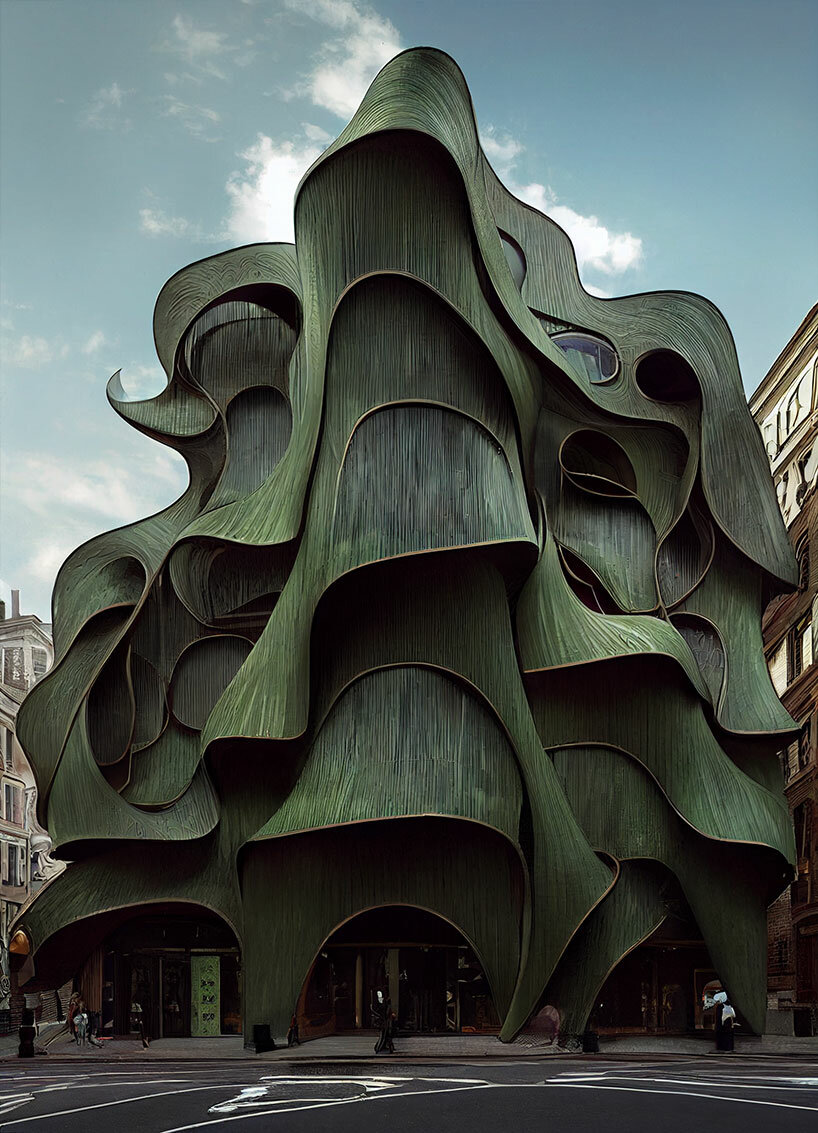
AI-generated images explore non-modular architecture
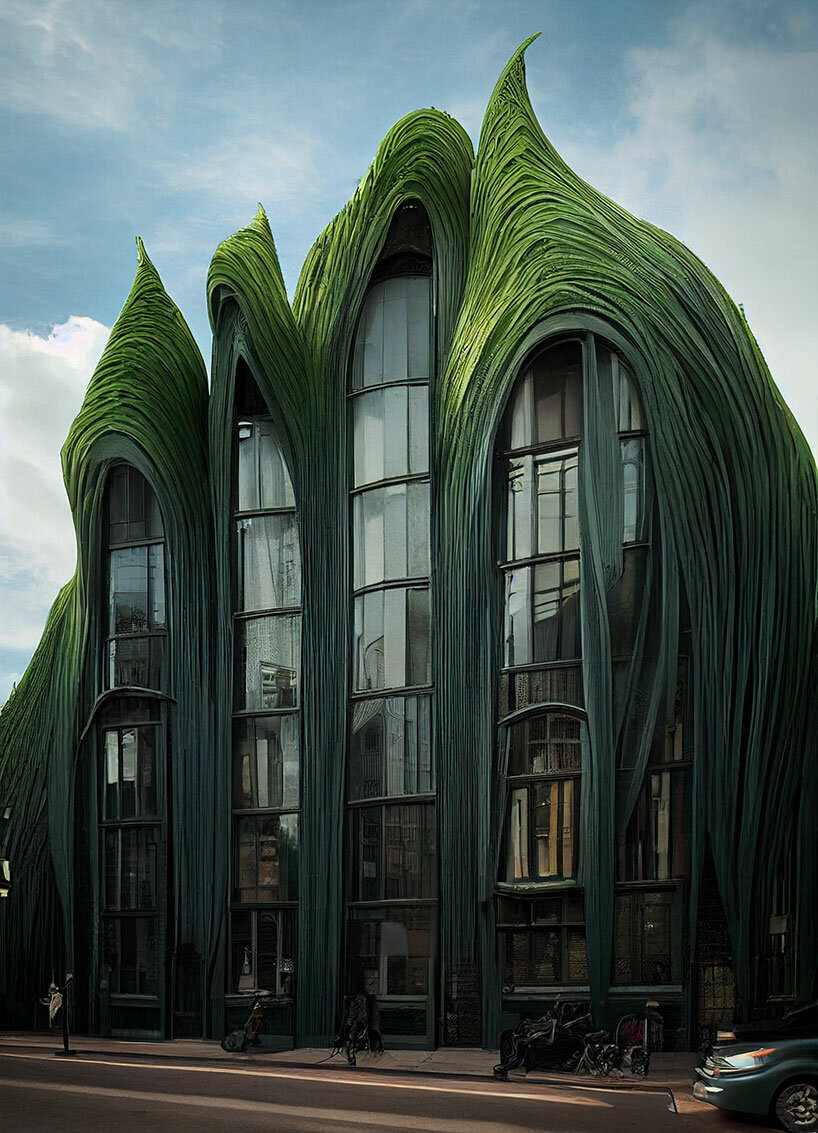
lush vegetation as a means of a new form of ornamentation
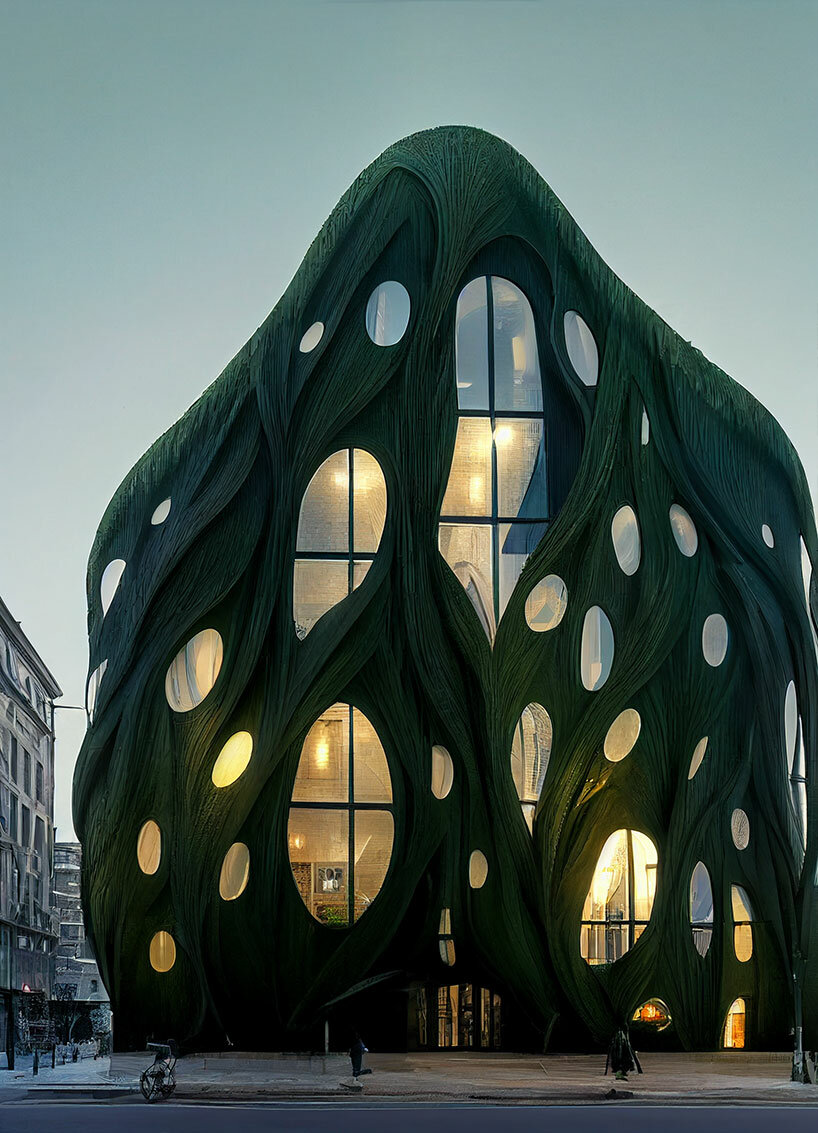
blending architectural solutions and surrealism
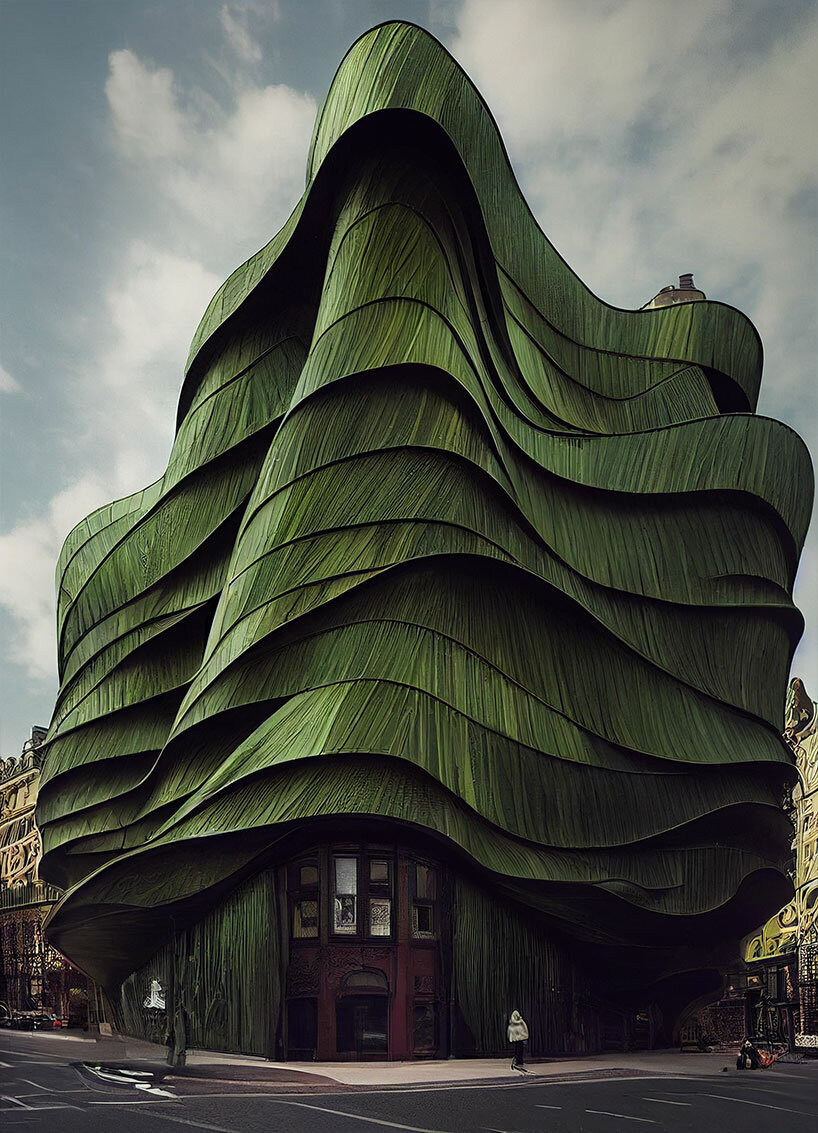
Ragab’s design goes beyond the physical limitations
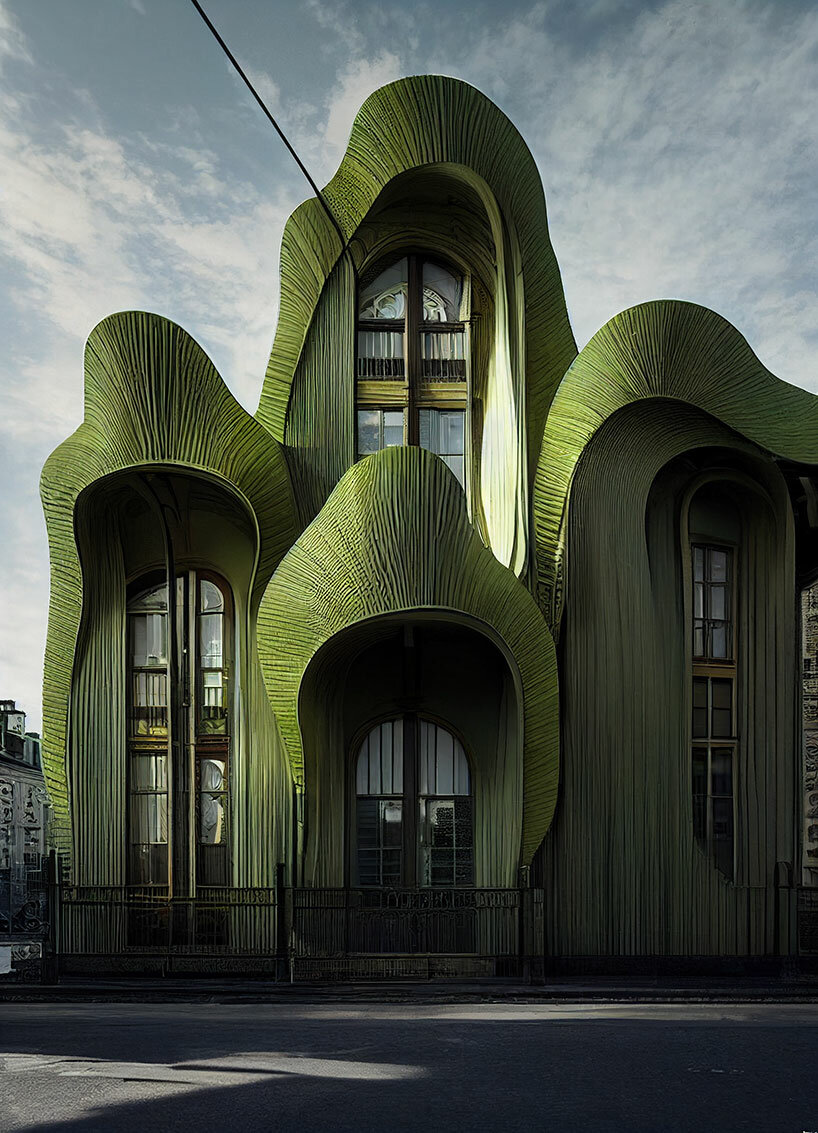
utilizing Midjourney as the primary design tool
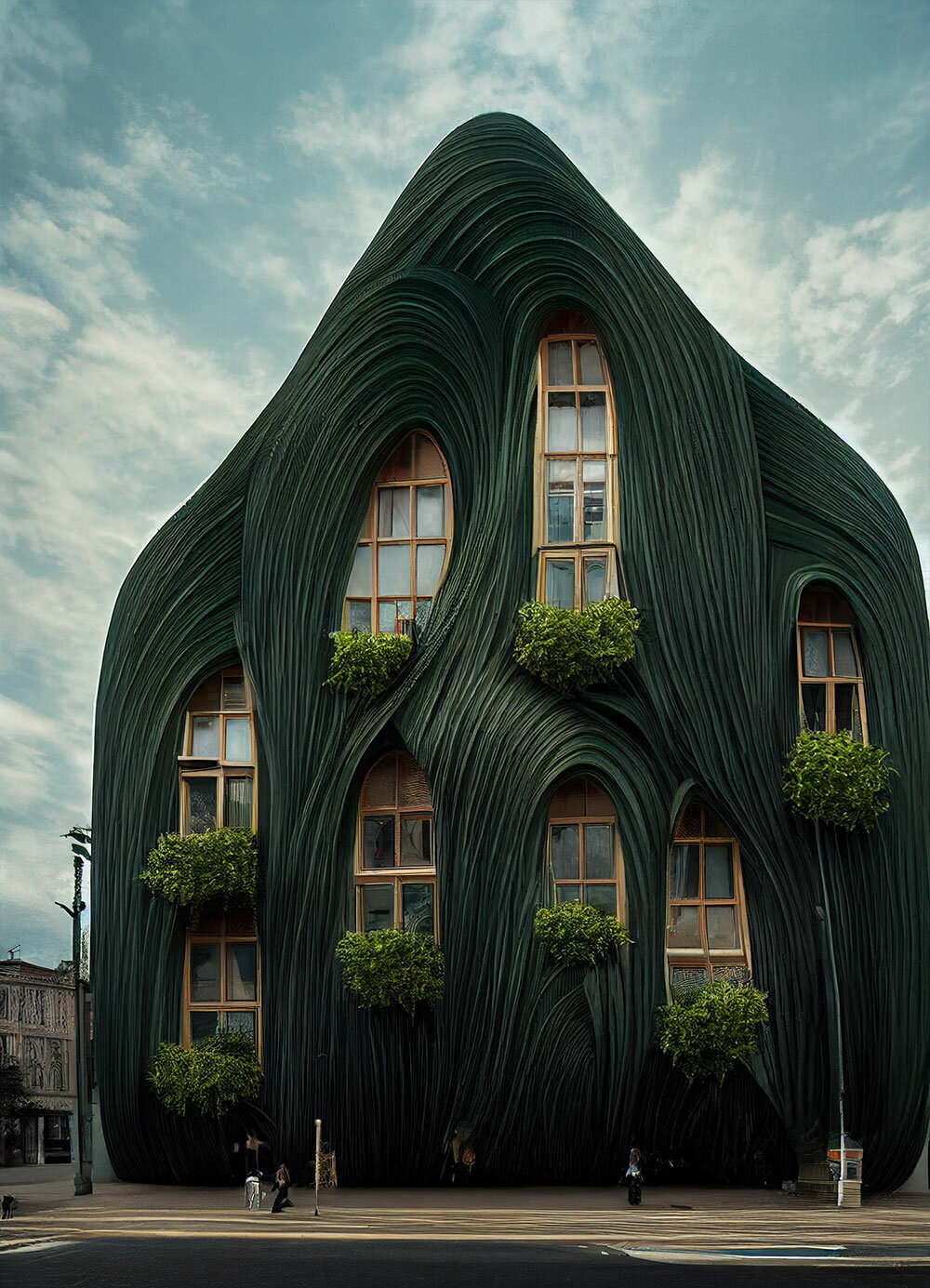
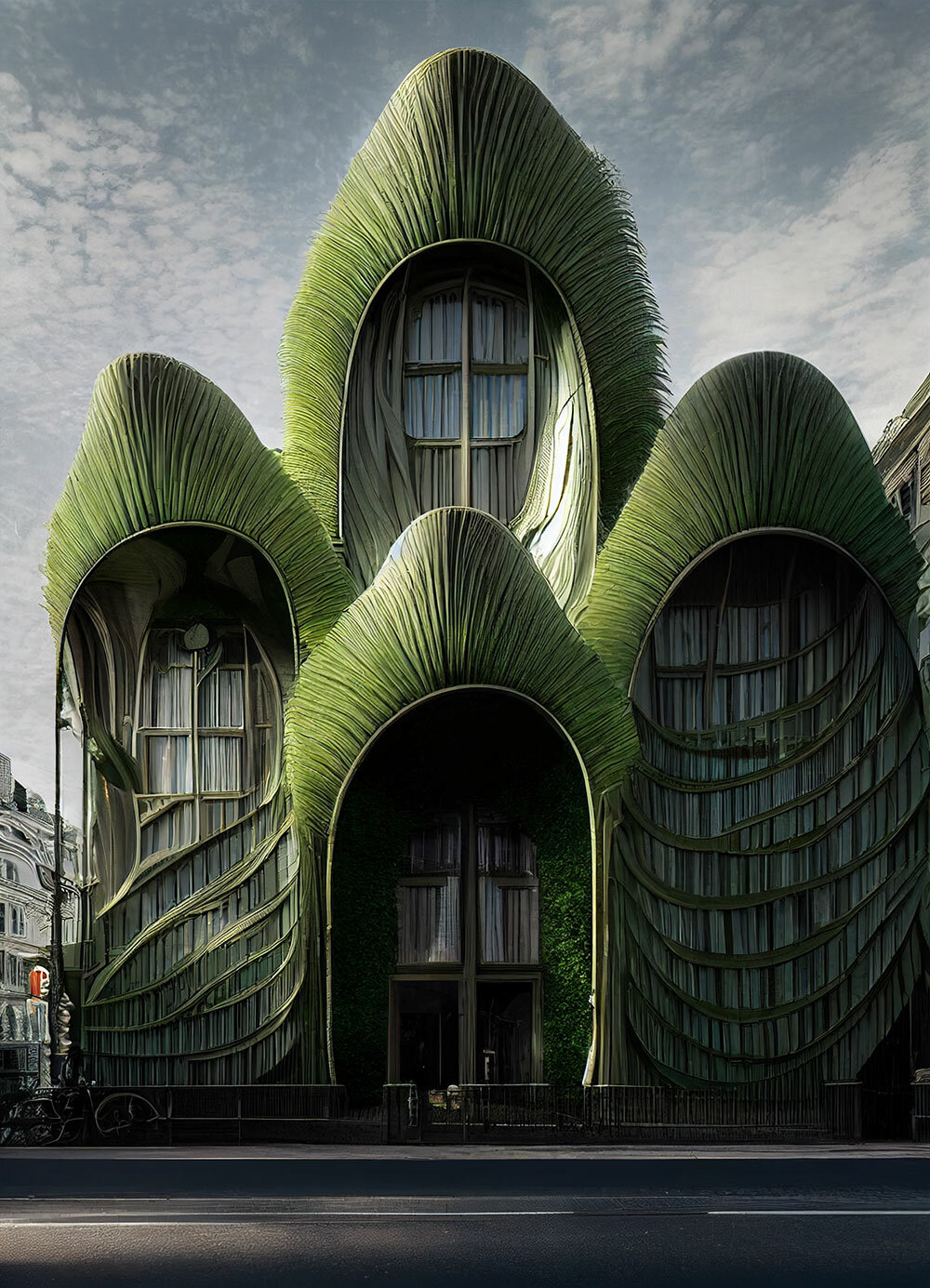
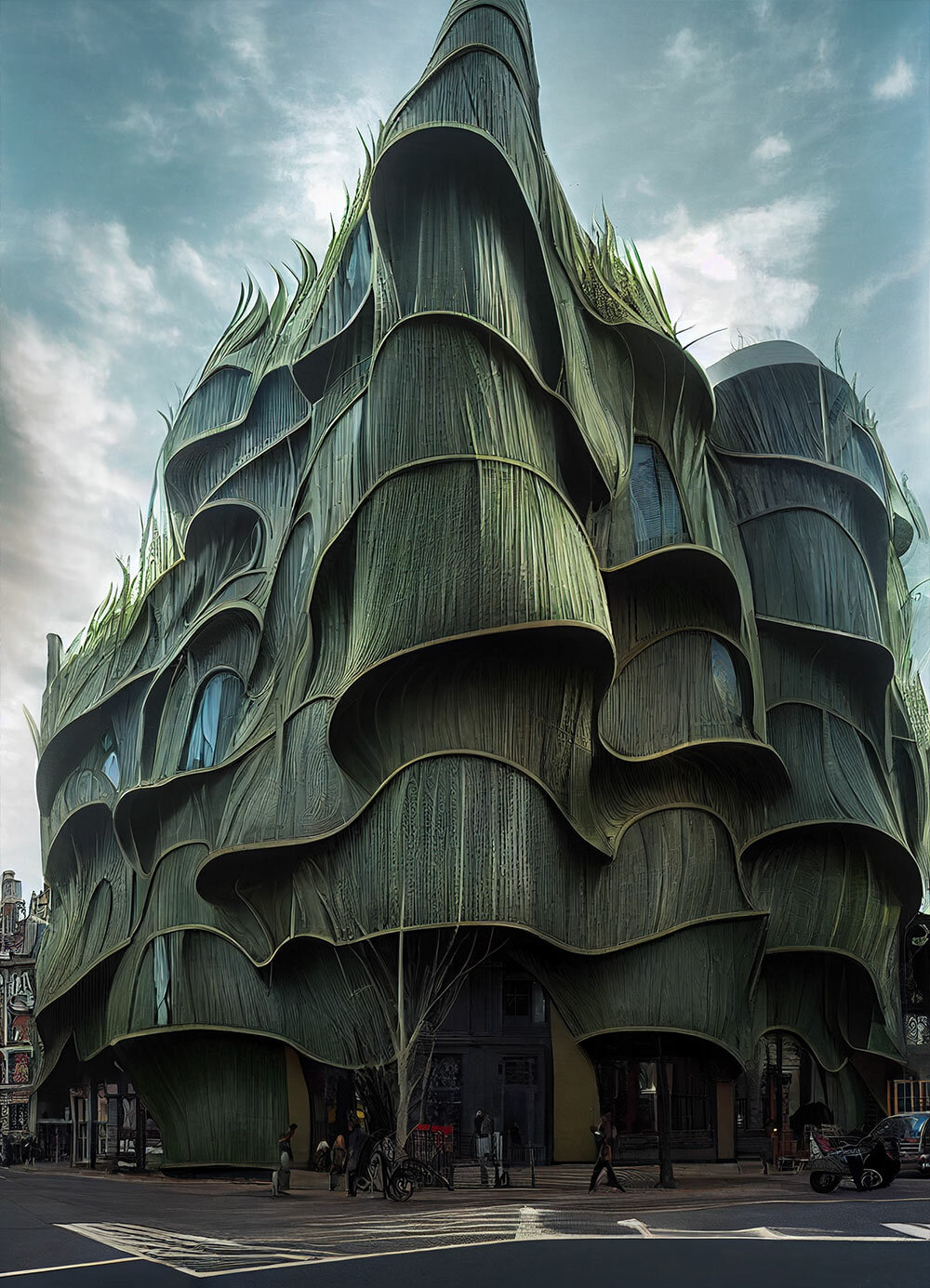
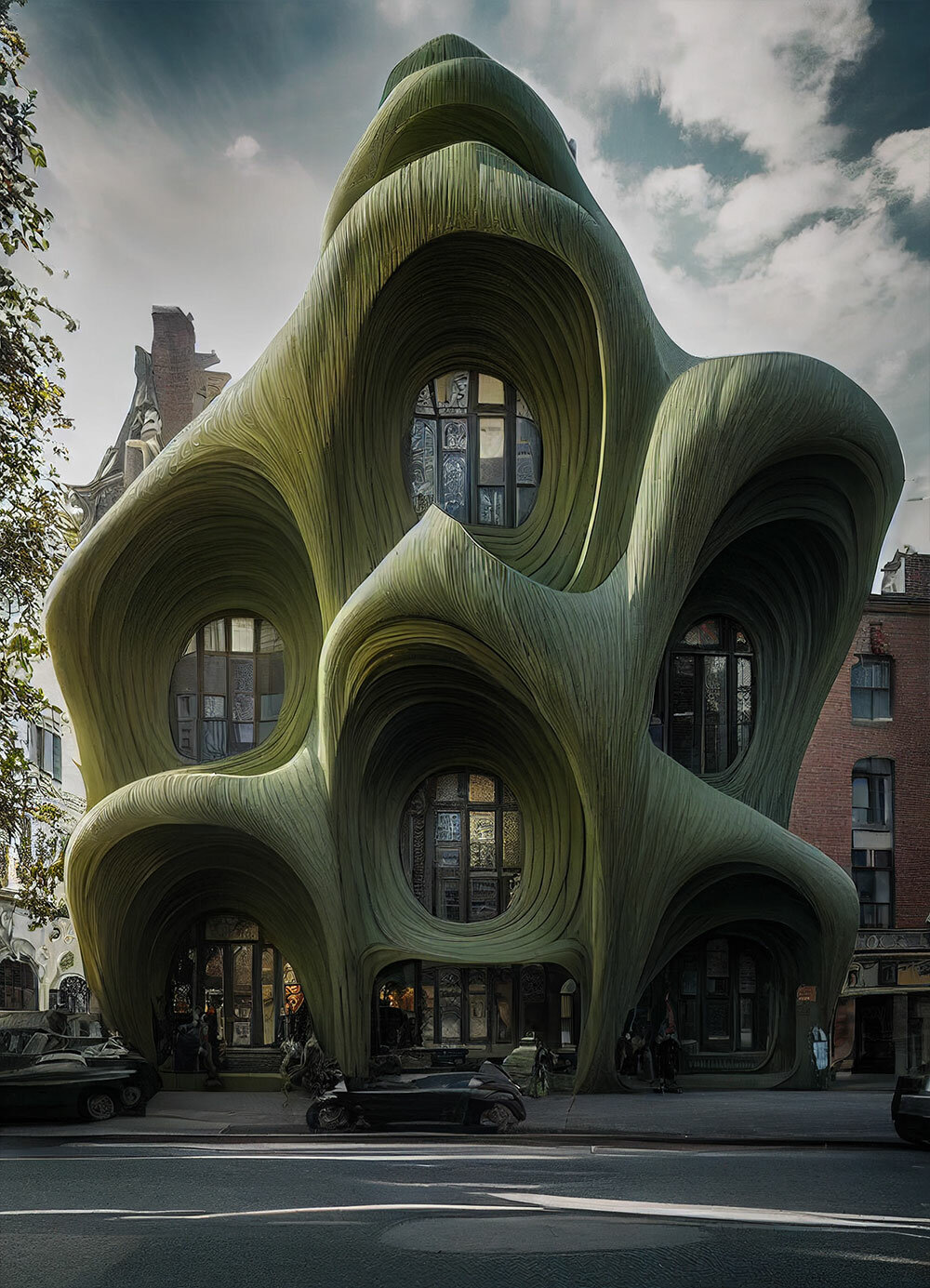
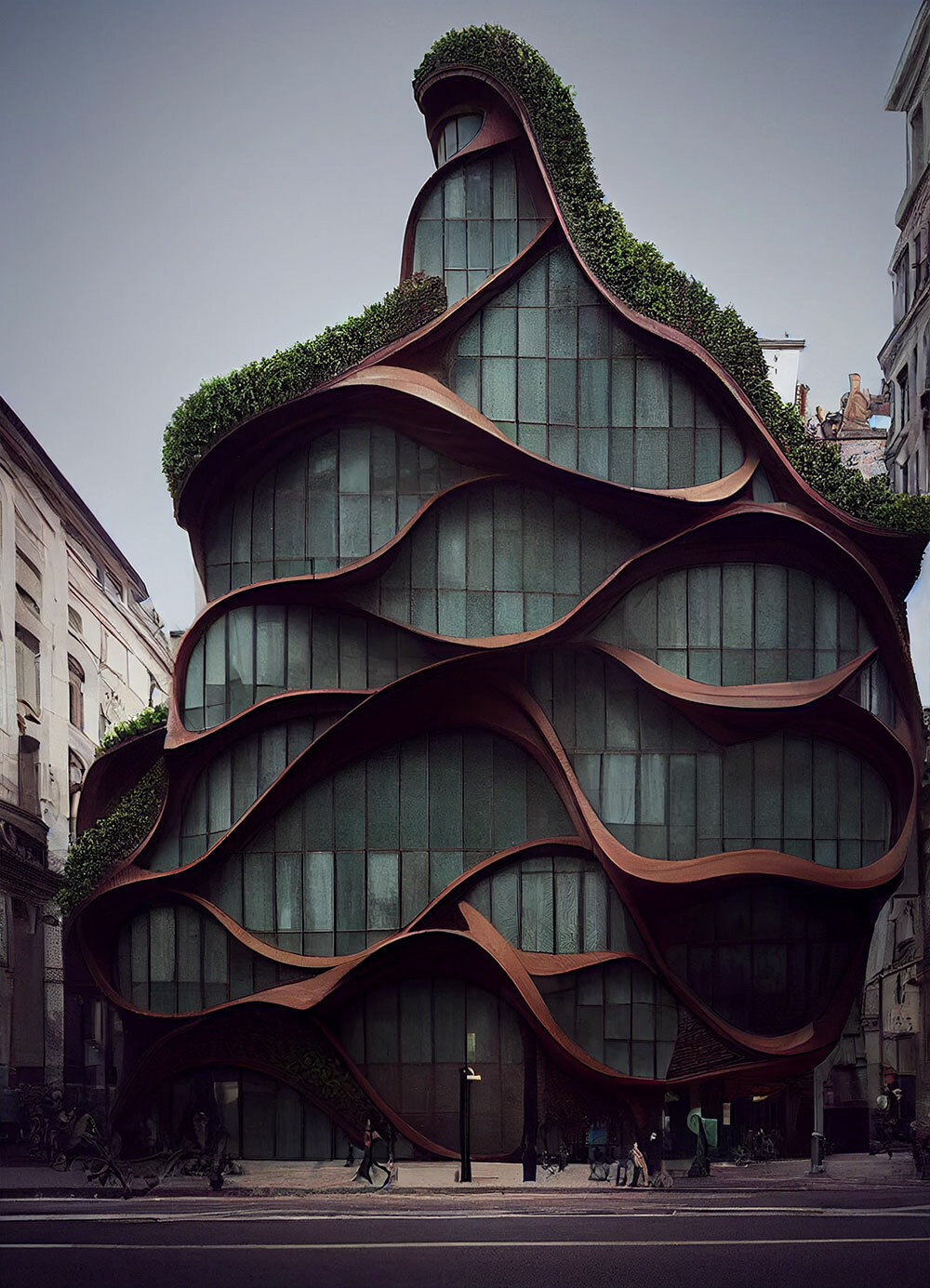
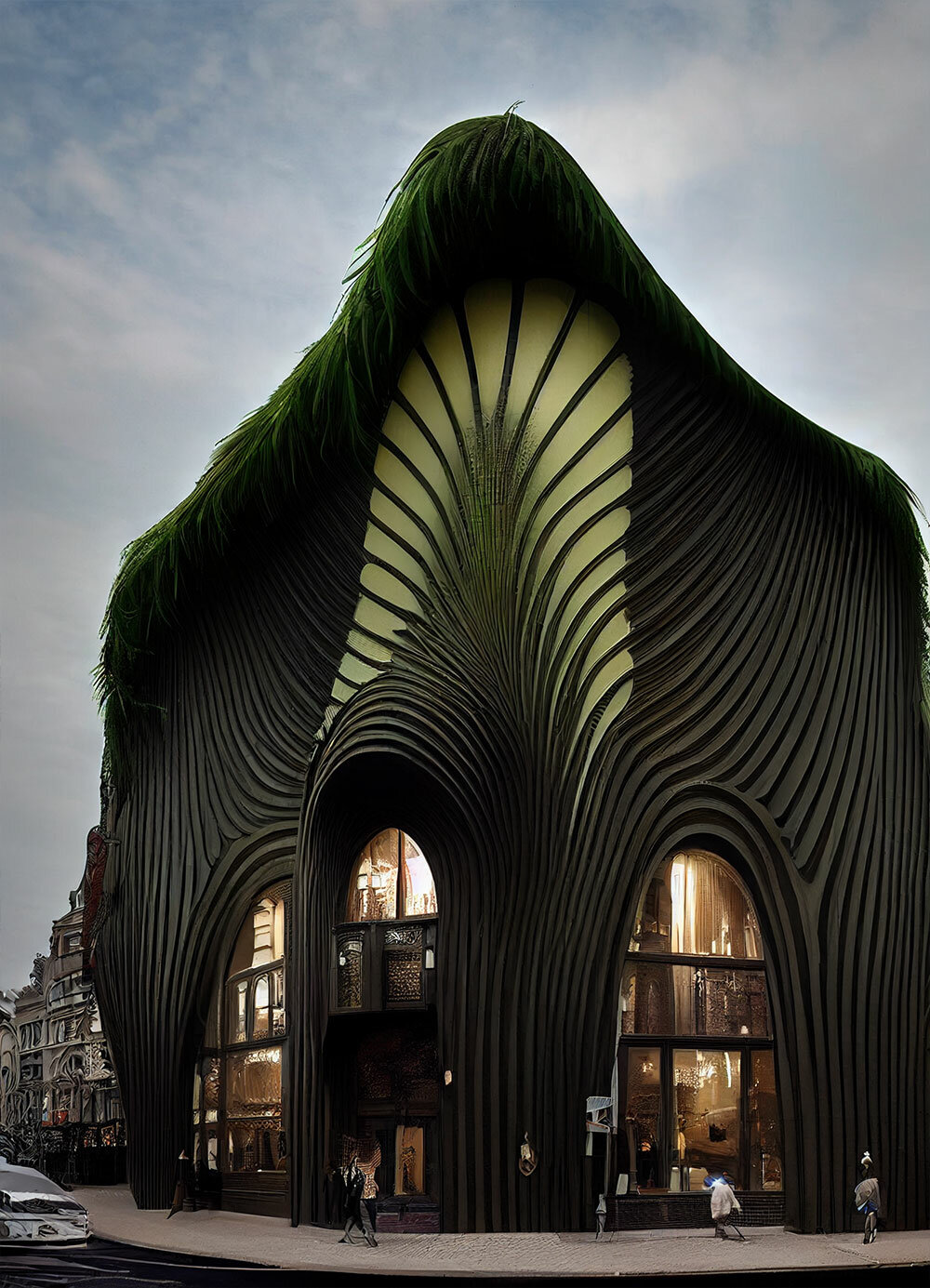
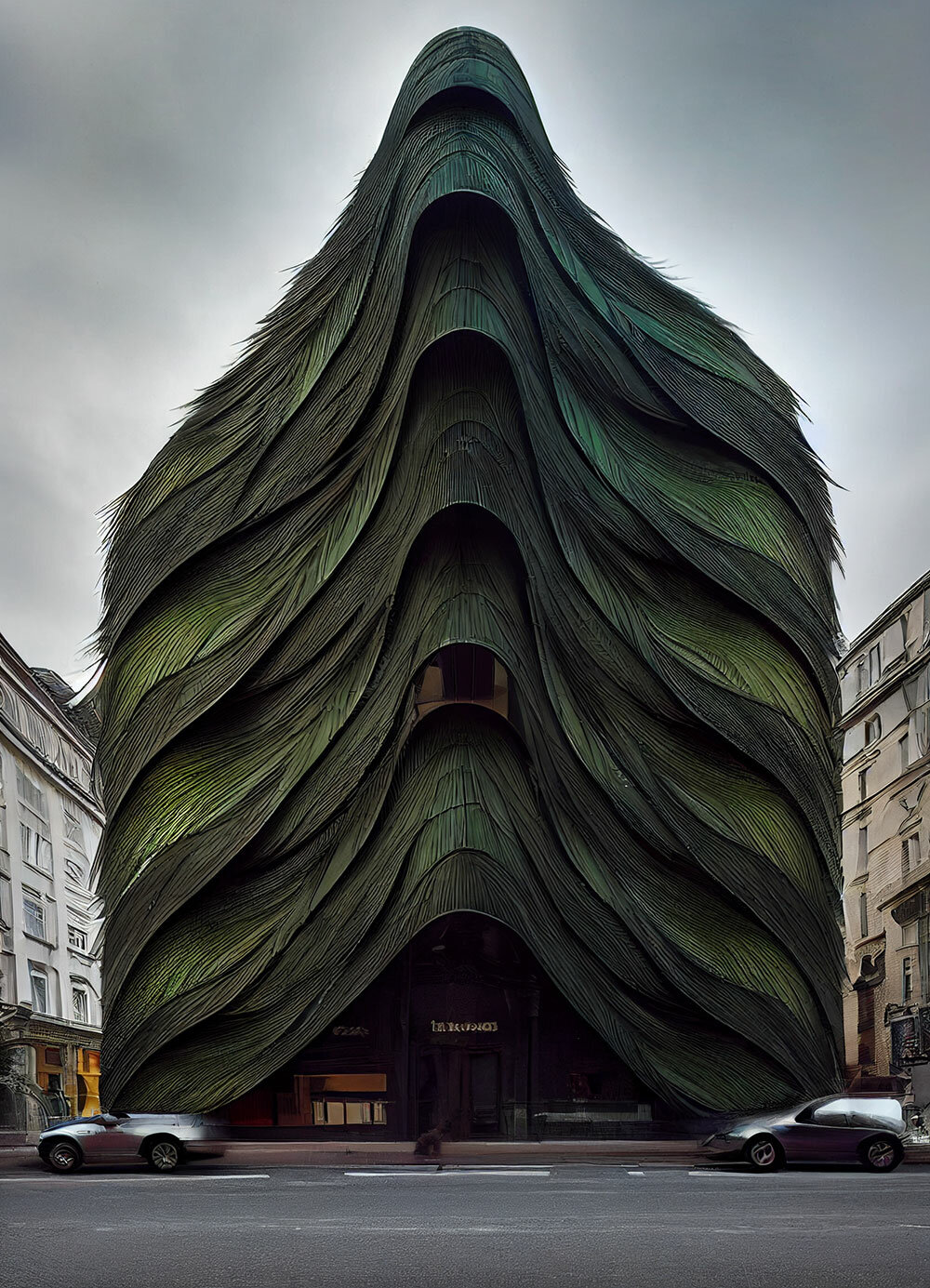
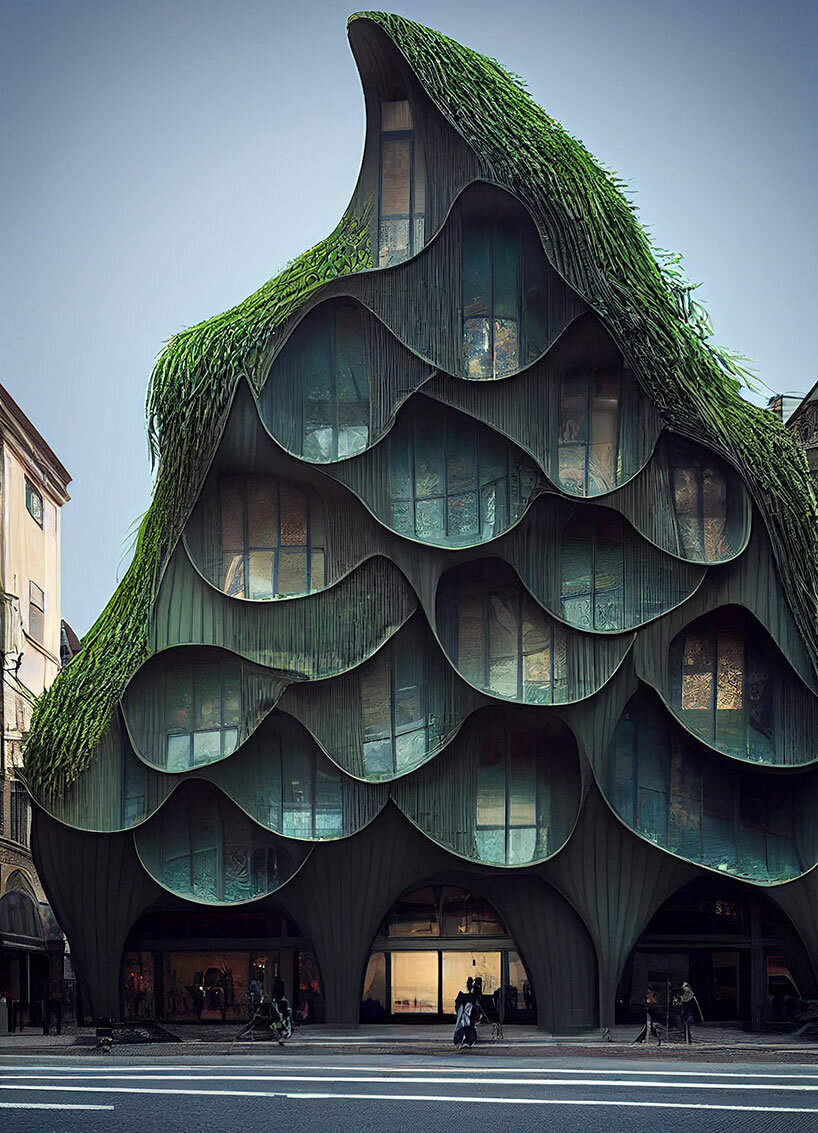
project info:
name: Feathers Architecture
artist: Hassan Ragab | Hassan Ragan
